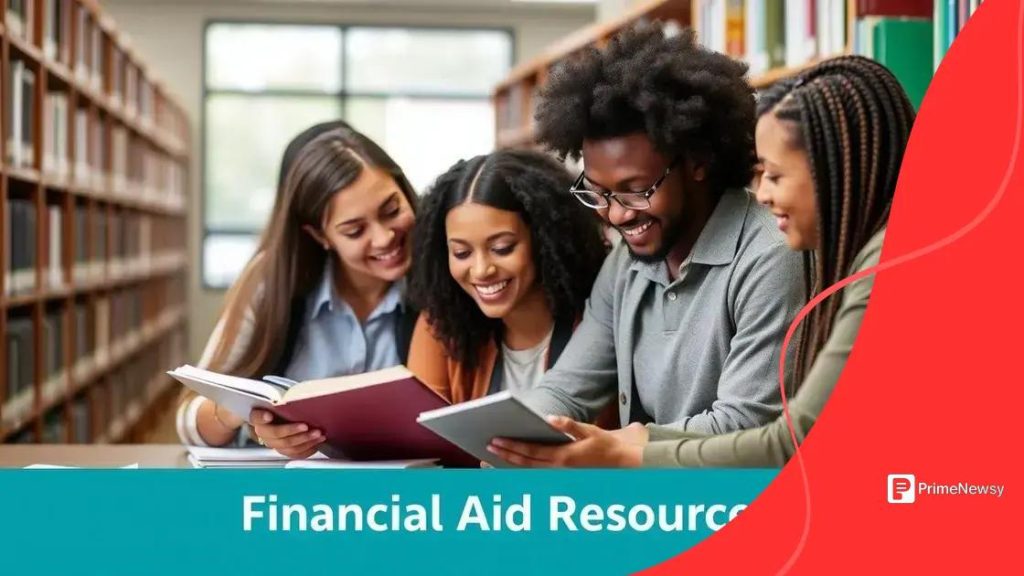Pell Grant eligibility updates: what you need to know

Anúncios
Pell Grant eligibility updates allow more students to qualify for federal financial aid aimed at assisting low-income individuals in funding their college education.
Pell Grant eligibility updates are crucial for students seeking financial aid. With new guidelines and changes, understanding your eligibility can empower your educational journey. Curious about how these updates affect you? Let’s dive in!
Anúncios
Understanding Pell Grants and their purpose
Pell Grants play a vital role in helping students from low-income families afford college. These federal grants are designed to support undergraduate education by providing financial assistance for tuition, fees, and other related costs. Understanding Pell Grants and their purpose is key for anyone looking to pursue higher education.
What are Pell Grants?
Pell Grants are need-based financial aid awarded to eligible students. Unlike loans, they do not need to be repaid, making them an essential resource for many. These grants can cover a significant portion of college expenses, depending on financial need and costs associated with attendance.
Who is eligible for Pell Grants?
Eligibility for Pell Grants is determined by several factors, including your financial situation, the cost of attendance at your school, and your enrollment status. To qualify, students must fill out the Free Application for Federal Student Aid (FAFSA). Here are some key eligibility criteria:
Anúncios
- Must be an undergraduate student.
- Demonstrate financial need.
- Be a U.S. citizen or an eligible noncitizen.
- Must not have defaulted on federal student loans.
The amount awarded can vary from year to year based on federal funding and individual circumstances. Staying informed about these changes is crucial for students seeking financial aid.
How do Pell Grants impact students?
Pell Grants significantly reduce the financial burden on students, allowing them to focus on their studies rather than worrying about tuition costs. By covering a portion of college expenses, these grants can make higher education accessible for many who would otherwise struggle to afford it. Additionally, this financial support can lead to higher graduation rates, as students are less likely to drop out due to financial pressures.
Understanding the purpose of Pell Grants aids students in maximizing their financial aid opportunities. Being aware of your eligibility can lead to a more affordable and successful college experience. Stay proactive, keep up with updates, and take advantage of the resources available to help you navigate your educational journey.
Recent changes to Pell Grant eligibility criteria
Recent changes to Pell Grant eligibility criteria have made significant impacts on students seeking financial aid for college. These updates are essential to understand, as they affect how students can access funding.
What are the recent changes?
One notable change is the increase in the maximum Pell Grant award. This adjustment allows more students to receive additional financial support. Moreover, the criteria for determining financial need have been revised, which can lead to more students qualifying for aid. Understanding these updates can help you in planning for your college expenses.
New eligibility requirements
The eligibility requirements have evolved as well. Here are some key updates to keep in mind:
- Changes in income thresholds make it easier for families to qualify.
- Students enrolled in less-than-full-time programs might now be eligible.
- The new criteria allow for additional factors that contribute to financial need.
These changes aim to provide broader access to financial support for students who need it the most. The updates help reflect the rising costs of education, ensuring that financial aid aligns better with current economic conditions.
Impact on students
These recent changes can significantly affect students’ ability to afford college. By increasing the maximum award and revising the income thresholds, more students can receive the necessary support to pursue higher education. This is particularly important for those coming from low-income families, who often face barriers to accessing education. Navigating these changes can empower students and help them make informed decisions about their financial aid options.
How to apply for Pell Grants in 2023

Applying for Pell Grants in 2023 is a straightforward process that can make a significant difference in funding your education. Knowing the steps involved can help you maximize your chances of receiving this vital financial aid.
Step-by-step process
To begin, you’ll need to fill out the Free Application for Federal Student Aid (FAFSA). This application is crucial for determining your eligibility for Pell Grants and other types of financial aid. Make sure to gather the necessary documents, such as your Social Security number, tax returns, and information about your assets.
Documents you need
Having the right documents ready will streamline your application process. Here are some essential items to gather:
- Your driver’s license number or state ID
- Your parents’ financial information if you’re considered a dependent
- Records of untaxed income, such as child support
- Bank statements and investment records
After preparing these documents, fill out the FAFSA carefully. Double-check your information to avoid mistakes that could delay your application.
Submitting your application
Once your FAFSA is complete, submit it as soon as possible. Each school has its own deadline for financial aid, and early submission increases your chances of receiving a Pell Grant. You’ll receive a Student Aid Report (SAR) that summarizes your information and indicates your expected family contribution.
If you qualify for a Pell Grant, your school will determine the amount you’re eligible to receive based on your financial need and cost of attendance. It’s essential to stay informed about any additional steps required by your school to finalize your financial aid.
Impact of eligibility updates on students
The impact of eligibility updates on students can be profound. These changes can significantly affect how students access financial aid, ultimately shaping their educational journeys. Understanding these impacts is essential for anyone considering applying for Pell Grants.
Greater Access to Funding
One of the most significant effects of the recent updates is the potential for greater access to funding. With adjusted income thresholds, more families may qualify for aid. This opens doors for students who might have previously felt that college was out of reach due to financial constraints.
Broader Eligibility Criteria
Changes to eligibility criteria also allow for a more diverse range of students to qualify for assistance. In the past, many students were excluded due to rigid requirements. Now, students enrolled in part-time programs or those who are returning to education after some time away may find themselves eligible for grants.
- This flexibility allows non-traditional students to benefit.
- Students in vocational programs may also qualify.
- Increased support for low-income families enhances educational equity.
These changes can lead to a more equitable educational landscape, where financial aid is accessible to those who need it the most. More students being able to apply for funding means a greater chance of completing their education and advancing in their careers.
Improved Educational Outcomes
As more students receive Pell Grant funding, we can expect to see improvements in educational outcomes. Financial support allows students to focus on their studies without the burden of financial stress. This can lead to higher graduation rates, as students are less likely to drop out due to financial difficulties.
Overall, the eligibility updates aim to create a more supportive environment for students pursuing their academic goals. By ensuring that more students can access funding, these changes promise to have a lasting positive impact on the future of education.
Resources for further assistance with Pell Grants
Finding the right resources for assistance with Pell Grants can make a big difference in navigating the financial aid process. Various organizations and websites offer support, information, and guidance for students. Knowing where to look can help you maximize your opportunities for funding.
Federal Resources
The U.S. Department of Education is a primary source for information on Pell Grants. Their website provides comprehensive details on eligibility, application procedures, and timelines. Additionally, the Federal Student Aid office offers tools and calculators that can help you understand your financial situation better.
State and Local Assistance
Many states also provide resources for students applying for federal aid. Check with your state’s higher education agency to find programs that offer guidance and support. You may encounter local financial aid offices at community colleges or universities that can give personalized assistance. Here are some key resources to consider:
- Your high school guidance counselor can offer helpful advice.
- Community organizations often have workshops on financial aid.
- Libraries may provide access to student aid information and workshops.
Utilizing these local resources can connect you with experienced individuals who understand the college funding landscape.
Online Educational Platforms
Several online platforms offer free courses and resources focused on financial aid. Websites like Coursera or edX provide education on the financial aid process, including how to apply for Pell Grants. These resources can clarify important aspects of the process, making it easier to navigate.
In addition, local non-profits often create detailed guides and workshops that address financial aid. Participating in these sessions can provide you with valuable insights and directly answer your questions.
In summary, understanding the Pell Grant eligibility updates and how to apply for them can greatly enhance your educational prospects. With the right resources and knowledge, you can navigate the financial aid process more effectively. Remember, seeking assistance is key, whether through federal resources, local support, or online platforms. This journey may seem daunting, but with the right information, you can make informed decisions that lead to a successful college experience.
FAQ – Frequently Asked Questions about Pell Grants
What is a Pell Grant?
A Pell Grant is a type of federal financial aid that does not need to be repaid. It helps low-income students pay for college.
How do I apply for a Pell Grant?
To apply for a Pell Grant, complete the Free Application for Federal Student Aid (FAFSA) online.
What are the eligibility criteria for Pell Grants?
Eligibility is based on financial need, income level, and certain other factors. Check the U.S. Department of Education’s website for details.
Can I get a Pell Grant if I am enrolled part-time?
Yes, students enrolled in part-time programs may be eligible for Pell Grants based on financial need.